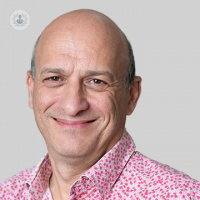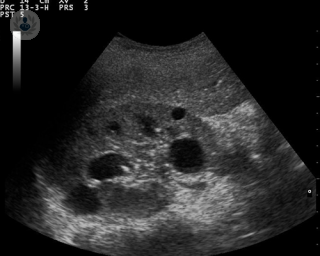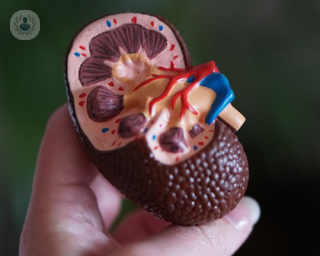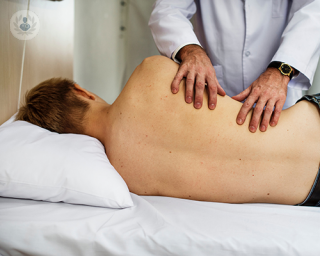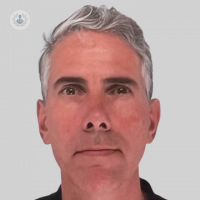Polycystic kidney disease (PKD)
Professor Jeremy Levy - Nephrology
Created on: 01-09-2013
Updated on: 09-27-2023
Edited by: Kate Forristal
What is PKD?
Polycystic kidney disease (PKD) is a genetic kidney disorder in which large cysts (big fluid sacs) form on the kidneys. These cysts increase kidney size and reduce functional tissue.
You should see a nephrologist for treatment.

What are the symptoms?
There are some cases where the symptoms are so mild that the person doesn’t realise they have this condition. In most other cases, the symptoms may include:
- Pain in the sides (one or both sides)
- Abdominal pain or tenderness
- Blood in the urine and excessive urination at night
- Arterial hypertension
- Colic type pain caused by kidney stones
- Drowsiness
- Nail abnormalities.
What causes it?
As mentioned, the condition is hereditary. However, polycystic kidney disease is also associated with the following conditions:
- Aortic or brain aneurysms
- Liver, testicular, or pancreas cysts
- Diverticulum of the colon.
It is though that 50% of people who have PKD also have liver cysts.
How can it be prevented?
There isn’t a known way to avoid polycystic kidney disease. As it is a hereditary disorder, the transmission risk can be calculated if a family member has had it.
What is the treatment?
Treatment aims to manage symptoms and prevent complications. Treatment includes:
- Blood pressure medicine
- Diuretics
- Low-salt diet.
It may be necessary to drain any cysts which are infected, that bleed, or are causing a blockage.
Quite often there are multiple cysts and it is not feasible to remove them one by one. Sometimes it is necessary to remove one or both kidneys.
